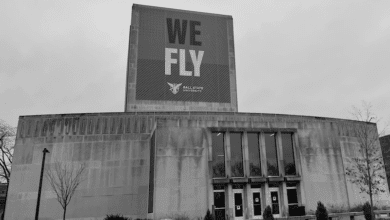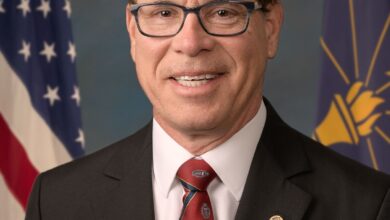
MCS Bus Referendum: What’s Best for Muncie?
MUNCIE, Indiana – When it comes to heated debates over money and politics, Muncie never disappoints. Based on widening political divide, nobody should expect things to change. Our November 5th Muncie Community School (MCS) Bus Referendum has been no exception.
Although heated at times, it’s been a good process for the community to go through in reaching an informed decision. Websites were built, letter written, social media was used, videos produced, etc. All these efforts went toward informing the public. If you’re still undecided, we’ve provided links to plenty of existing resources. We won’t rehash facts and figures that have already been covered, nor will we dispel intentional misinformation.
Let’s be clear up front, some decisions can be made for selfish reasons, but some cannot. In cases like providing mass transportation to school children, we cannot focus on our own selfish interests because they are irrelevant. We have to set aside what’s best for the individual and look hard at what’s best for the community – it’s called sacrifice, and collective personal sacrifice is why this country has endured for over 200 years, but it’s also while we’ve struggled for the past several years.
For example, if I look at this bus referendum selfishly, or my parents looked at this proposal based on “What’s in it for me?”, our immediate response would be, “Nothing”. We don’t have school aged children. Assuming we live in a $75,000 home, voting no would ensure we’d be able to save $77.00 the first year, according to the Keep the Buses Running website, and confirmed by Mark Burkhardt with MCS.
However, stopping at no is very short-sighted on what’s best for the community. You might be able to rationalize and justify being selfish 25 different ways, but the bottom line is it’s still a selfish decision. Much of the information floating around the community on this referendum has been due to self-seeking agendas.
So, let’s go beyond our selfish reasons for voting no, and consider for a moment that we don’t live in the City of Muncie by ourselves. Let’s change our perspective and consider the decision from a collective group of people. How does changing our perspective impact our decision?
Well, as an individual, we might save $77 a year by voting no for mass transportation, but that means no buses for 6,700 students and their parents. What’s their alternative? Can MITS pick up the slack and give the kids a ride?
We sat down with Larry King, General Manager of MITS, to ask him if this was an option. Larry explained to us how “tripper services” can be used to transport students to school as long as MITS doesn’t deviate from regular routes (there is a federal law providing for this). He followed up by saying, “We already offer “tripper services” for some high school and middle school kids.”
Then he showed us the MITS route book where those morning and afternoon routes are highlighted. He said, “We highlight the routes so our regular customers know when school kids will be riding the bus.” He smiled and said, “Our regular customers avoid using the buses carrying students.”
So, our obvious next question was, “Can you transport elementary kids?” Again, he referred to the federal guidelines which regulates every public transportation system in the country, “Because of all the Muncie neighborhoods and locations of the elementary schools, by law, we cannot pick them up because we’d have to deviate from our stated routes.”
Therefore, MITS is not an option.
If we subtract the 1,800 high school kids from this equation, it leaves us with about 4,900 households driving their kids to school. Based on 75% of kids getting free lunches, we already know that financial resources are lacking so many probably don’t even have a car, but for sake of argument, let’s assume they all have access to transportation. Is sending 4,900 cars on the road each morning and afternoon really feasible? Isn’t there a better way?
We could sit down with traffic engineers and have them perform a study for us, but luckily there are already good rules of thumb we can use to help us with this dilemma.
Remember, regardless of what anybody says, or would like you to believe, this issue is about mass transportation. It has absolutely nothing to do with politics, federal aid, school consolidations, grades, quality of schools, rankings, bad decisions made in the past, or decisions we’d like to force MCS to make tomorrow. The decision facing the community is about whether we should use mass transportation to take our students to and from school.
Let’s look at the American Public Transportation Association, where they post relevant facts and benefits of using mass transportation:
- The average household spends 16 cents of every dollar on transportation, and 94% of this goes to buying, maintaining, and operating cars, the largest expenditure after housing.
- Public transportation provides an affordable, and for many, necessary, alternative to driving.
- Households using public transportation on a given day save more than $9,700 every year.
- Households near public transit drive an average of 4,400 fewer miles than households with no access to public transit. This equates to an individual household reduction of 223 gallons per year.
- For every dollar a community invests in public transportation, it generates about $4 in economic returns.
- A single commuter switching his or her commute to public transportation can cut a household’s carbon emissions by 10%
Intuitively, we already knew the advantages of using mass transportation – this is why we’ve done it for years. Economically, it would cost our community much more to get our kids to school individually versus using buses. That is the rationale for using mass transportation in the first place. It’s affordable, safer, uses less gasoline, eases road congestion, reduces our carbon footprint, reduces air pollution, and we make sure our kids make it to school safely and in a timely manner.
As an individual, I may save $77.00 a year, but as a community it will cost us much more not to use buses. If I limit my view to my own wants, no matter what excuse or justification I offer, it is considerably short-sighted and harmful to the greater good. As individuals, if we look upon decisions selfishly, we end up punishing our community in terms of real dollars and cents for fuel, road repairs, our environment, and our health.
In this case, our government body, called Muncie Community Schools, serves our community. We elect members to the board who oversee how the business of operating schools is conducted. If we don’t like the way they run our schools, then we vote for new members. We attend public meetings and bring up our questions and grievances, write letters, etc. This is how a democracy works.
We don’t make the system dysfunctional and inoperative. We don’t make our community spend more for something to prove a point. And for goodness sake, we don’t put our kids at risk due to a specific belief. What we do collectively defines this community.
Arm yourself with facts and figure – read through the relevant information provided below, and then vote on November 5th on what’s best for the community:
- Muncie Voice article by Ty Morton
- Muncie Voice article by League of Women Voters
- The StarPress
- Support the Buses Facebook Page
- Keep the Buses Running Website
- Citizens for Good Government
In a separate decision, the Delaware County Election Board condensed the number of voting places to help save the community money – you can find your voting location on this online Delaware County Voter Precincts map.
Also, Superintendent Tim Heller and Financial Director Mark Burkhardt produced a very informative video discussing the details about this referendum. Please watch it:






